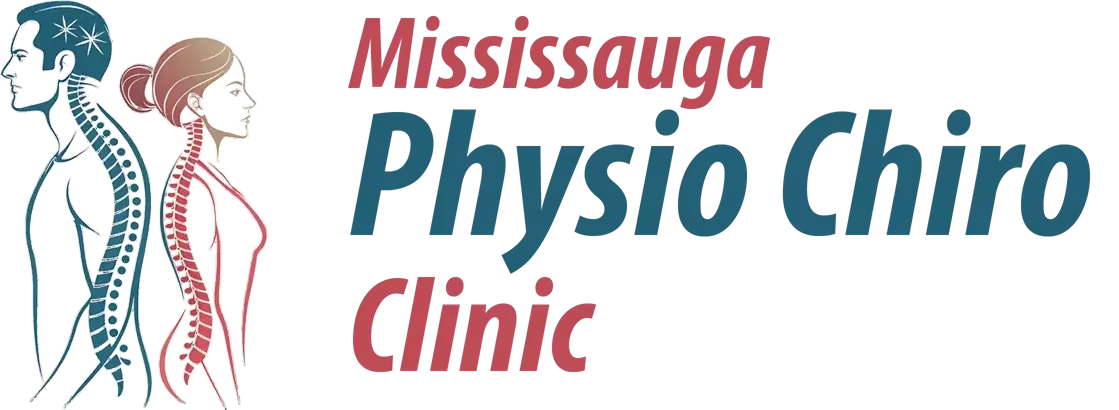Chiropractor for Sinusitis in Mississauga As we explore the role of chiropractors in managing sinusitis in Mississauga, it’s crucial to recognize how holistic approaches can complement traditional treatments. Many patients have found that techniques like spinal adjustments and sinus drainage massage not only relieve discomfort but also address underlying issues affecting sinus health. By focusing on individualized care, chiropractors can support our immune systems and enhance overall well-being. But what specific methods can be tailored to our unique needs, and how do they differ in treating chronic versus acute sinusitis? About Our Physiotherapy and Chiropractic Services At Mississauga Physio Chiro Clinic, we’re dedicated to providing extensive physiotherapy and chiropractic services tailored to address your specific needs and promote overall wellness. We recognize that conditions like sinus infections can lead to sinus pressure, nasal congestion, and nasal obstruction, impacting your quality of life. Our team is committed to offering effective sinus therapy to help alleviate these symptoms. Through targeted physiotherapy techniques, we can enhance sinus drainage and provide sinus pain relief, helping to clear nasal passages and improve airway health. Our Expert Physiotherapy & Chiropractic Services in Mississauga focus on aligning the spine and optimizing nervous system function, which can be essential for immune system support. We believe that a well-functioning body can better combat sinus-related issues. Sinusitis Explained: Causes, Symptoms, and Contributing Factors Sinusitis is an inflammation of the sinus lining that can arise from various causes and greatly impact our breathing and overall well-being. We often categorize sinusitis into two types: acute sinusitis, which lasts for a short duration, and chronic sinusitis, persisting for several weeks or longer. The key symptoms we may experience include a stuffy nose, sinus headaches, and nasal discharge, which can vary in color and consistency. Several contributing factors can lead to sinus inflammation. Allergic rhinitis, often triggered by environmental allergies such as pollen, dust, or pet dander, can exacerbate our sinus issues. Additionally, viral infections like the common cold may cause acute sinusitis, while bacterial infections can lead to more severe cases requiring sinus infection treatment. Understanding these aspects is essential for managing our condition effectively. We should be aware of our symptoms and triggers, as this knowledge empowers us to seek appropriate care. By addressing the root causes of sinusitis, we can improve our quality of life and breathe easier. Chiropractic Care for Sinusitis: Natural Relief and Healing Chiropractic care offers a holistic approach to managing sinusitis, helping us find natural relief and support our body’s healing processes. Through targeted techniques, we can experience significant benefits such as nasal congestion relief and inflammation reduction. By focusing on the alignment of our spine and the overall function of our nervous system, chiropractic care aims to enhance our body’s innate ability to heal itself. One effective method employed in chiropractic treatment for sinusitis is sinus drainage massage. This technique can alleviate sinus pressure relief and promote better drainage of the sinuses, which is essential for reducing breathing difficulty. By addressing the underlying structural issues, we can often improve airflow and lessen the discomfort associated with sinusitis. While chiropractic care can be an effective sinus treatment, it’s important to remember that our health is a collaborative effort. Consulting with an ENT specialist can provide additional insights and guarantee a thorough approach to our sinus health. By integrating chiropractic care with conventional treatments, we can optimize our recovery, enhancing our overall well-being and quality of life. Key Conditions That Trigger Sinus Infections and Persistent Congestion Understanding the key conditions that can lead to sinus infections and persistent congestion is essential for effectively managing our sinus health. Many of us may experience sinus pain and nasal blockage due to various triggers. Seasonal allergies, such as hay fever, can cause swollen nasal passages, leading to sinus swelling and chronic congestion. Additionally, respiratory infections and upper respiratory infections can exacerbate these symptoms, resulting in increased sinus pressure and discomfort. It’s vital to maintain proper nasal hygiene to reduce the risk of these infections. This includes regular rinsing to clear out allergens and irritants, which can act as a natural decongestant. Environmental factors, such as pollutants and dry air, can also contribute to sinus issues. Recognizing these triggers helps us take proactive measures in our daily lives. For instance, we might consider using humidifiers during dry seasons and avoiding known allergens when possible. Ultimately, by understanding the conditions that contribute to sinus problems, we can work together to improve our sinus health and reduce the frequency of infections and congestion, promoting overall well-being. Chiropractic Adjustments to Improve Sinus Drainage and Relieve Nasal Congestion Addressing the underlying factors that contribute to sinus issues, we can explore how chiropractic adjustments can enhance sinus drainage and alleviate nasal congestion. Many of us experience sinus congestion, which can lead to discomfort, including facial pain and postnasal drip. By focusing on the alignment of the spine and neck, chiropractic adjustments may facilitate better nasal breathing and improve overall sinus function. These adjustments can help reduce inflammation and promote sinus flush, allowing for more effective sinus drainage and providing much-needed sinus relief. Unlike congestion medicine that merely masks symptoms, chiropractic care targets the root causes of sinus congestion treatment. By restoring proper alignment, we can encourage ideal nerve function, which may play an essential role in reducing sinus pressure and discomfort. Ultimately, incorporating chiropractic adjustments into our wellness routine offers a holistic approach to managing sinus issues. We can experience lasting benefits without relying solely on traditional methods. As we seek relief from nasal congestion, we should consider the valuable role chiropractic care can play in supporting our sinus health and overall well-being. How Spinal Alignment Affects Sinus Health and Breathing Proper spinal alignment plays an essential role in maintaining ideal sinus health and enhancing our ability to breathe freely. When our spine is aligned correctly, it allows for peak nervous system function, which directly influences the health of our sinus cavities. This alignment can greatly improve nasal airflow, leading to effective sinus congestion relief. Poor
Chiropractor for Joint Pain
Chiropractor for Joint Pain in Mississauga When we consider the impact of joint pain on our daily lives in Mississauga, it’s clear that finding effective relief is essential. Our Chiropractor for Joint Pain specializes in tailored treatment plans that not only address pain but also enhance overall joint health through adjustments and lifestyle changes. By understanding the root causes of our discomfort, these professionals help us regain mobility and improve our quality of life. But what specific strategies can we adopt to prevent future issues and maintain our joint health? Let’s explore some of the insights that could make a difference. About Our Physiotherapy and Chiropractic Services At Mississauga Physio Chiro Clinic, we offer a thorough range of physiotherapy and chiropractic services designed to alleviate joint pain and enhance your overall well-being. Our focus is on providing effective joint pain relief through personalized treatment plans that address specific needs. We recognize that joint dysfunction and inflammation can severely impact daily life, which is why we emphasize improving joint mobility and flexibility. Our skilled Physiotherapist & Chirotherapist in Mississauga employs a combination of chiropractic care for joint pain and physical therapy for joint pain, ensuring a holistic approach to recovery. By utilizing targeted exercises and manual therapy techniques, we aim to restore ideal joint function and support the body’s natural healing processes. In addition, we provide ergonomic support for joints, helping our patients develop healthier habits that prevent further injury. We believe that education is essential in managing joint health, so we take the time to discuss strategies for maintaining joint support in everyday activities. Together, we’re committed to guiding you on your journey to recovery and enhancing your overall quality of life. Your comfort and well-being are our top priorities, and we’re here to help you every step of the way. How Chiropractic Care Alleviates Joint Pain Understanding how chiropractic care works can greatly enhance our approach to alleviating joint pain, as it focuses on restoring proper alignment and function to the musculoskeletal system. By addressing joint alignment issues, we can help reduce joint discomfort and improve overall joint health. Chiropractic adjustments facilitate better mobility, which is essential for those experiencing acute joint pain or chronic joint pain. In our practice, we also emphasize the importance of joint stiffness relief. Through targeted chiropractic techniques, we can release tension and improve flexibility, making daily activities easier. Additionally, we often incorporate joint strengthening exercises tailored to individual needs, which play a significant role in maintaining joint stability and preventing future injuries. For those who may require extra support, we can recommend mobility aids for joint support, ensuring a thorough approach to care. By combining chiropractic care with these additional resources, we’re committed to enhancing our patients’ quality of life. Our goal is to empower everyone to move freely and comfortably, enabling them to enjoy life without the burden of joint pain. Together, we can achieve lasting results for better joint health and overall well-being. Understanding the Root Causes of Joint Pain and Dysfunction What factors contribute to joint pain and dysfunction can be complex, often stemming from a combination of lifestyle choices, injuries, and underlying health conditions. Many of us may experience joint stiffness or swollen joints due to common forms of arthritis, such as osteoarthritis and rheumatoid arthritis. Osteoarthritis often arises from wear and tear, leading to joint degeneration and the breakdown of cartilage, while rheumatoid arthritis is an autoimmune condition characterized by inflammatory arthritis that can severely impact our mobility. In addition to these conditions, factors like obesity, poor posture, and repetitive strain can exacerbate joint issues. We should also consider how our diet and activity levels can influence joint health. For some, more advanced treatments like joint injections may be necessary to alleviate pain and promote cartilage regeneration. Identifying the Symptoms of Joint Pain and Mobility Issues Recognizing the symptoms of joint pain and mobility issues is essential for addressing underlying conditions and improving our overall quality of life. Many of us may experience achy joints, particularly in areas like the knees, hips, and back, which can greatly hinder our daily activities. Joint swelling and tenderness might also accompany these symptoms, indicating inflammation or other problems, such as gout. We should be aware of joint instability, which can make movements feel unsafe or unsteady, leading to a higher risk of injuries. Additionally, persistent neck pain can contribute to discomfort throughout our bodies, affecting our posture and mobility. It’s important to monitor any changes in our symptoms, especially if we notice joint deterioration over time. Early identification of these symptoms allows us to seek appropriate care. By addressing issues like knee pain or hip pain promptly, we can prevent further complications and improve our overall joint health. Understanding these signs empowers us to take action, whether through lifestyle changes or consulting with a chiropractor to explore treatment options tailored to our needs. Chiropractic Diagnosis: Assessments and Imaging for Joint Pain When we visit a chiropractor for joint pain, the diagnostic process often starts with a thorough assessment to evaluate our symptoms and medical history. This initial evaluation is essential for establishing a chiropractic diagnosis, as it helps the chiropractor understand the underlying causes of our discomfort. During this assessment, we might discuss conditions such as psoriatic arthritis, degenerative joint disease, and reactive arthritis, as these can greatly impact our joint health. After gathering our medical history, imaging techniques like X-rays or MRI scans may be employed to get a clearer picture of our joint structures. This imaging can identify issues like facet joint pain or signs of ankylosing spondylitis, which can be vital for effective treatment planning. Restoring Joint Alignment and Mobility with Chiropractic Adjustments Chiropractic adjustments play an essential role in restoring joint alignment and enhancing mobility, helping us ease pain and improve our overall function. By targeting misaligned joints, we can effectively address conditions such as shoulder pain, elbow pain, wrist pain, and ankle pain. Through these adjustments, we work to realign our joints, which can lead
Chiropractor for Concussion
Chiropractor for Concussion in Mississauga We recognize the importance of accessing specialized chiropractic care for concussion recovery in Mississauga. Our dedicated team employs evidence-based techniques to address neck pain, headaches, and balance issues resulting from concussions. We create personalized treatment plans focused on your unique recovery needs, incorporating gentle adjustments and vestibular therapy. Early intervention is crucial for effective healing, and we’re committed to supporting your journey back to peak health. By exploring our services, you’ll discover extensive strategies that promote brain healing and resilience against future injuries. About Our Physiotherapy and Chiropractic Services At Mississauga Physio Chiro Clinic, we offer extensive physiotherapy and chiropractic services tailored to address the unique needs of each patient, including those recovering from concussions. Our approach is evidence-based and focuses on the complexities of traumatic brain injuries, such as post-concussion syndrome. We recognize that symptoms like dizziness and headaches can greatly impact daily life, which is why we provide thorough headache management strategies alongside our core services. Our Best Physiotherapy & Chiropractic Clinic in Mississauga specializes in balance therapy and cognitive therapy to enhance recovery timelines and optimize neurorehabilitation. Through personalized assessment, we identify specific challenges each patient faces and develop targeted treatment plans to address them. We prioritize a patient-centered approach, ensuring that our physiotherapy and chiropractic services integrate seamlessly to promote overall well-being. By collaborating closely with each individual, we aim to empower them on their journey to recovery. Our goal is to not only alleviate symptoms but also to restore function and improve quality of life after a concussion. With our expert guidance, patients can navigate their recovery process with confidence and clarity. Concussions Explained: Causes and Impact on Brain Health Understanding concussions is fundamental for recognizing their causes and the significant impact they can have on brain health and overall well-being. A concussion is categorized as a mild traumatic brain injury, often resulting from a head injury, particularly in sports-related activities. It’s important to note that a concussion can occur without a loss of consciousness, making awareness of symptoms essential. The impact of a concussion extends beyond immediate symptoms, affecting neurocognitive function and potentially leading to vestibular dysfunction. This is why following a structured concussion protocol is fundamental for effective recovery. Post-injury rehabilitation often involves physical therapy for concussion, which helps individuals regain strength, balance, and cognitive function. Neurocognitive testing is also an important tool in evaluating recovery and determining when it’s safe to return to daily activities or sports. We must prioritize brain health by understanding the risks associated with concussions and ensuring proper evaluation and treatment. By doing so, we can help mitigate the long-term effects of these injuries and support ideal recovery for those affected. Identifying Concussion Symptoms and Knowing When to Get Help Recognizing concussion symptoms is fundamental for our health, as timely intervention can greatly influence recovery outcomes. When we experience head trauma, common concussion symptoms may include confusion, amnesia, dizziness after head injury, and visual disturbances. It’s important to be aware of these signs and understand that they can manifest differently in each individual. If we or someone we are familiar with displays these symptoms, seeking help promptly is essential. A concussion is a type of brain injury, and addressing it early can prevent further complications and facilitate a smoother recovery. Following return-to-play guidelines is particularly important for athletes, as returning too soon can exacerbate the injury. Occupational therapy can also play a key role in our recovery process, helping us regain cognitive and physical function. After a concussion, a gradual return to activity is recommended, allowing our brain time to heal properly. By staying vigilant and informed about concussion symptoms, we can guarantee our safety and well-being, as well as that of our loved ones. If we’re ever in doubt, consulting a healthcare professional is always the best course of action. How Chiropractic Care Aids in Concussion Recovery After identifying concussion symptoms and seeking appropriate medical help, exploring chiropractic care can be a valuable component of our recovery process. A chiropractor specializes in treating various aspects of concussion recovery, including neck pain, post-traumatic headaches, and balance problems. They often employ vestibular therapy to address dizziness and cognitive impairment, which can considerably impact our daily lives. Chiropractic adjustments may help restore proper alignment, relieving tension and reducing discomfort. Additionally, chiropractors can provide guidance on hydration and nutrition, emphasizing the importance of omega-3 for brain health, which supports cognitive function and overall recovery. As we navigate our return-to-work program, chiropractic care can play an essential role in helping us regain our strength and stability. By addressing both physical and cognitive challenges, we can work towards a more thorough recovery. Through personalized treatment plans, chiropractors focus on our specific needs, ensuring we feel supported throughout our journey. Treating Whiplash and Cervical Spine Issues Post-Concussion Whiplash and cervical spine issues are common complications following a concussion, often leading to persistent discomfort and mobility challenges that can hinder our recovery process. We understand that many individuals experience not just neck pain but also headaches, dizziness, blurred vision, and coordination issues as a result of these injuries. Sensitivity to light may also accompany these symptoms, further complicating our day-to-day activities. Chiropractic treatment can play an essential role in addressing these complications. Through targeted therapies, we can help restore proper alignment in the cervical spine, alleviating tension and promoting healing. Gentle adjustments aim to improve mobility and reduce pain, making it easier for us to manage our symptoms. Additionally, chiropractic care can enhance nervous system functioning, which may help mitigate issues like dizziness and coordination problems. As we navigate our recovery journey, it’s important to work closely with our chiropractor to develop a personalized treatment plan that addresses our unique needs. By focusing on both the whiplash and concussion aspects, we can optimize our healing and regain the quality of life we deserve. Chiropractic Techniques for Relieving Post-Traumatic Headaches Following the challenges of managing whiplash and cervical spine issues, many of us also face the debilitating effects of post-traumatic
Chiropractor for Postural Imbalances
Chiropractor for Postural Imbalances in Mississauga We’re here to help you tackle postural imbalances in Mississauga, a common issue affecting many individuals due to poor ergonomics and lifestyle habits. Our Chiropractor for Postural Imbalances provides extensive chiropractic care, including thorough assessments, personalized adjustments, and tailored rehabilitation exercises designed to improve spinal health and overall well-being. We recognize the strain that poor posture places on your body, often leading to chronic pain. By focusing on education about posture and ergonomics, we empower you to make lasting changes. Discover the supportive techniques and strategies we offer to enhance your posture and relieve discomfort, ensuring you’re on the path to a balanced life. About Our Physiotherapy and Chiropractic Services At Mississauga Physio Chiro Clinic, we offer extensive physiotherapy and chiropractic services designed to address postural imbalances and enhance overall well-being. Our approach begins with a thorough postural assessment, allowing us to identify any spinal misalignment and understand the unique needs of each patient. By focusing on postural correction, we help restore ideal body alignment, which is essential for pain relief and functional movement. Incorporating core strengthening exercises and mobility exercises into our treatment plans, we empower our patients to improve their posture and overall physical health. Our physiotherapy and chiropractic services include personalized chiropractic adjustments tailored to alleviate discomfort and promote proper alignment. Additionally, we believe that postural education is vital for long-term success. We work closely with our patients to teach them about the importance of maintaining good posture in their daily lives, ensuring they have the tools to make lasting changes. Our Top Physiotherapist & Chiropractor in Mississauga is committed to supporting each individual on their journey to better health, helping them achieve improved posture and enhanced quality of life. Together, we can tackle postural imbalances and foster a healthier, more balanced lifestyle. Postural Imbalances Explained: Causes and Long-Term Effects Postural imbalances can arise from various factors, including poor ergonomics, muscle weakness, and lifestyle habits, and understanding their causes is essential for preventing long-term effects on our health. When we experience postural dysfunction, such as forward head posture or rounded shoulders, it often stems from a combination of core weakness and muscle tightness. These issues lead to musculoskeletal imbalances that can notably impact our daily lives. Over time, the consequences of neglecting our postural awareness can manifest as chronic back pain and neck pain. We might not realize it, but our everyday activities—like prolonged sitting or improper lifting—can create postural strain that exacerbates these issues. As we continue to engage in these habits, we may find ourselves trapped in a cycle of discomfort and dysfunction. It’s vital for us to recognize these patterns and take proactive steps to address them. By improving our posture and strengthening our core, we can alleviate muscle tightness and reduce the risk of developing further complications. With a focus on education and awareness, we can work together to create healthier habits that support our overall well-being. Recognizing Different Types of Postural Dysfunction Many of us may not realize the various types of postural dysfunction that can affect our daily lives, leading to discomfort and long-term health issues. Recognizing these issues is essential for our overall well-being. Common postural deviations include poor posture, which often manifests as a rounded back or slumped shoulders. This can result in conditions like kyphosis, where the upper spine curves excessively. We might also encounter lordosis, characterized by an exaggerated inward curve of the lower back, or scoliosis, which involves an abnormal lateral curvature of the spine. Text neck is another prevalent issue, stemming from prolonged smartphone use, causing strain on our neck and upper back. Additionally, muscle asymmetry can develop, leading to joint stiffness and postural fatigue, making it harder for us to maintain an upright position. Ergonomics plays a significant role in mitigating these issues, as proper workstation setup can help us avoid postural dysfunction. By being aware of these types of postural dysfunction, we can take proactive steps to improve our posture and, consequently, our quality of life. How Chiropractic Care Supports Postural Correction Recognizing the signs of postural dysfunction is the first step towards improvement, and chiropractic care offers a targeted approach to support postural correction and enhance overall spinal health. As we work with a chiropractor, we can benefit from various techniques designed to restore spinal stability and improve our posture. Through manual therapy, our chiropractor can address muscle compensation patterns that often develop due to poor posture. This hands-on approach helps alleviate tension and promotes better alignment. Additionally, postural therapy allows us to engage in posture rehabilitation, focusing on specific exercises tailored to our needs. Incorporating flexibility exercises helps to improve our range of motion, while strengthening exercises bolster the muscles necessary for maintaining proper posture. Our chiropractor can also advise us on workplace ergonomics, ensuring our environments support healthy postural habits. Assessing Postural Misalignments and Muscle Imbalances Evaluating postural misalignments and muscle imbalances is essential for identifying the underlying issues that contribute to discomfort and hinder our overall well-being. By examining postural misalignments, we gain insight into how spinal curvature and muscle imbalances affect our daily lives. A thorough biomechanical evaluation allows us to understand our movement patterns and pinpoint areas requiring attention. We often encounter individuals with compromised postural stability, leading to chronic pain and reduced functionality. Through careful analysis, we can develop tailored posture rehabilitation programs that focus on postural retraining and enhancing neuromuscular control. This approach not only addresses immediate discomfort but also promotes long-term holistic posture correction. It’s important to remember that each body is unique, and our strategies must reflect that individuality. By collaborating with a chiropractor, we can engage in a detailed assessment that reveals the root causes of our postural challenges. Together, we’ll work towards restoring balance and improving our overall posture, which is crucial for our health and well-being. By prioritizing these evaluations, we empower ourselves to take proactive steps in preventing future issues and achieving ideal posture. Chiropractic Approaches to Forward Head Posture and Text
Chiropractor for Kyphosis
Chiropractor for Kyphosis in Mississauga If you’re seeking a chiropractor for kyphosis in Mississauga, we’re here to help. We focus on thorough assessments to understand your specific condition. Our skilled team provides personalized treatment plans, including spinal adjustments and therapeutic exercises, aimed at improving your posture and alleviating pain. We also emphasize postural education and ergonomic adjustments to support your daily activities. Through our holistic approach, we aim to enhance your overall well-being and quality of life. To discover how we can assist you further, we encourage you to explore the various options we offer for effective kyphosis management. About Our Physiotherapy and Chiropractic Services At Mississauga Physio Chiro Clinic, we consistently provide extensive physiotherapy and chiropractic services tailored to address the unique needs of individuals with kyphosis. We recognize that kyphosis can lead to discomfort and mobility challenges, which is why our approach focuses on postural correction and holistic spine care. Our Best Physiotherapy and Chiropractic Services in Mississauga include chiropractic adjustments and spinal manipulation to help realign the spine, relieving pain and improving function. We emphasize pain management strategies that empower our patients to take control of their health. Through targeted rehabilitation exercises and mobility exercises, we aim to strengthen the muscles supporting the spine, enhancing overall stability. We also prioritize postural awareness, teaching our patients how to maintain proper posture in daily activities to prevent further complications. Our team is dedicated to creating personalized treatment plans that not only address current symptoms but also promote long-term wellness. By focusing on the interconnectedness of the body, we endeavor to provide an all-encompassing approach to managing kyphosis. Together, we can work towards improving your quality of life and supporting your journey to better spinal health. Kyphosis Explained: Causes and Different Types Kyphosis, often characterized by an exaggerated forward curvature of the spine, can arise from various causes and presents in different forms, each requiring specific attention and management strategies. One common type is hyperkyphosis, where the spinal curvature is excessive, leading to a rounded back appearance. This condition can often be exacerbated by postural kyphosis, which results from poor posture habits over time. Congenital kyphosis is another form, originating from spinal deformities present at birth, while degenerative disc disease can contribute to kyphosis as the spine ages and discs deteriorate. All these forms of kyphosis can lead to vertebral compression and contribute to significant back pain, impacting daily activities and overall quality of life. Understanding the different types of kyphosis is essential for effective management. We need to recognize that each type may require tailored treatment approaches, including chiropractic care, physical therapy, or, in severe cases, surgical intervention. By identifying the underlying causes and types of kyphosis, we can adopt proactive measures to alleviate discomfort and improve spinal health, fostering better posture and mobility for ourselves and others. Identifying the Signs and Symptoms of Kyphosis Recognizing the signs and symptoms of kyphosis is important for addressing this condition effectively and can help us understand when to seek professional assistance. Kyphosis often manifests as a noticeable hunched posture, which may stem from poor posture over time or conditions like Scheuermann’s kyphosis. We might experience upper back pain or thoracic pain, especially after long periods of sitting or standing. Stiffness in the spine can also be a common symptom, accompanied by muscle tightness in the surrounding areas. These sensations can lead to a postural imbalance, making it even more challenging to maintain proper alignment. It’s essential to pay attention to these signs, as spinal misalignment can worsen if left untreated. If we notice a combination of these symptoms, it could indicate that kyphosis is developing or worsening, and seeking professional help would be a wise decision. Early intervention can make a significant difference in managing the condition, improving our overall quality of life. By being proactive about recognizing these signs, we can take important steps towards better spinal health and well-being. The Role of Chiropractic Care in Kyphosis Management Chiropractic care plays an essential role in managing kyphosis by addressing spinal alignment issues and promoting better posture through tailored treatment plans. As chiropractors, we focus on extensive kyphosis treatment strategies that begin with a thorough spinal assessment. This allows us to identify any misalignments and develop a customized approach to care. Manual therapy is a core component of our treatment, as it helps in spinal correction and alleviating discomfort. We often incorporate postural therapy to educate patients about maintaining proper posture throughout their daily activities. In addition, we recommend flexibility exercises and strengthening exercises to enhance muscle support around the spine, which is vital for long-term improvement. In addition to hands-on treatment, we emphasize the importance of ergonomic adjustments in the workplace and home environments to minimize strain on the back. By integrating physiotherapy techniques, we can additionally facilitate recovery and promote mobility. Overall, our goal is to empower our patients with the knowledge and tools they need to manage their kyphosis effectively and improve their quality of life. Together, we can work towards achieving a healthier, more aligned spine. Spinal Misalignment and Postural Imbalances: Chiropractic Assessment Identifying spinal misalignments and postural imbalances is essential for developing an effective treatment plan tailored to each patient’s unique needs. During a chiropractic assessment, we evaluate the spine and posture to determine the presence of conditions like kyphosis, which can manifest as thoracic kyphosis or cervical kyphosis. By examining the curvature of the spine, we can identify areas of spinal instability that may contribute to discomfort or pain. Our assessment also considers how postural imbalances affect body mechanics, particularly in relation to daily activities and workplace ergonomics. Poor posture can lead to further complications, including muscle strain and increased risk of injury. Through a thorough evaluation, we can pinpoint specific areas that require attention. Once we identify these misalignments, we can devise a personalized treatment plan that may include chiropractic adjustments, physical therapy, and recommendations for improving body mechanics and ergonomics at work. By focusing on these elements, we aim to support our
Chiropractor for Tension Headaches
Chiropractor for Tension Headaches in Mississauga If you’re struggling with tension headaches in Mississauga, our Chiropractor for Tension Headaches has solutions that can help. Our chiropractic care focuses on the root causes, like neck tension and poor posture. We combine spinal adjustments with muscle relaxation techniques to improve mobility and reduce pain. Our holistic approach also includes lifestyle recommendations to prevent future headaches. We recognize how debilitating these headaches can be, and we’re dedicated to helping you regain control. By exploring our services further, you’ll discover tailored strategies designed specifically for your needs and the well-being you deserve. About Our Physiotherapy and Chiropractic Services At Mississauga Physio Chiro Clinic, we specialize in providing thorough physiotherapy and chiropractic services designed to effectively address tension headaches and enhance overall well-being. Our Top Mississauga Physiotherapist & Chiropractor understands how chronic tension headaches can greatly impact daily life, often stemming from neck tension and muscle tightness caused by stress or poor posture. We offer a holistic headache treatment approach that integrates various techniques, including chiropractic adjustments, myofascial release, and massage therapy. These methods not only relieve symptoms but also target the underlying issues contributing to tension headaches. Our chiropractic services focus on realigning the spine and improving mobility, while our physiotherapy interventions emphasize muscle relaxation and the alleviation of stress. Tension Headaches Explained: Causes and Key Symptoms Tension headaches arise from a combination of factors, including muscle tension, stress, and poor posture, often leading to discomfort that can greatly affect our daily activities. These headaches, sometimes referred to as stress headaches or muscle contraction headaches, typically manifest as a dull, aching pain that wraps around our head. Common symptoms include neck stiffness, shoulder tension, and sensitivity to light or sound. We might also experience eye strain, especially after prolonged periods of screen time, which can exacerbate our discomfort. Identifying headache triggers is essential; for many of us, emotional stress, lack of sleep, or even dehydration can contribute to the onset of these headaches. It’s crucial to recognize the presence of trigger points in our neck and shoulders, as they can lead to increased tension and pain. Being aware of our posture while sitting or standing can help mitigate some of these issues. By understanding the causes and key symptoms of tension headaches, we can take proactive steps to manage our discomfort and improve our overall well-being. Chiropractic Solutions for Lasting Tension Headache Relief Chiropractic care offers effective strategies for alleviating the discomfort associated with tension headaches, helping us regain balance and improve our quality of life. Our approach involves a combination of chiropractic solutions tailored to address the specific needs of those suffering from headache disorders. In our practice, we focus on tension headache treatment that incorporates relaxation techniques and deep breathing exercises to reduce stress and promote relaxation. We recognize that many of us face stress-induced headaches stemming from physical strain and muscle tension. By addressing these underlying issues, we can alleviate pain and improve overall well-being. Additionally, we emphasize ergonomic corrections to guarantee that our daily activities don’t contribute to headaches. This includes evaluating our workspaces and providing guidance on posture to mitigate the risks associated with TMJ dysfunction. We also encourage lifestyle changes that foster long-term relief, such as regular exercise, proper hydration, and balanced nutrition. By integrating these elements into our routines, we can effectively manage our tension headaches and enhance our quality of life. Together, let’s explore how chiropractic care can create a supportive path toward lasting relief from tension headaches. What Triggers Tension Headaches? Common Causes and Prevention Understanding what triggers tension headaches is pivotal to effectively managing and preventing them in our daily lives. Many of us experience episodic tension headaches, often characterized by scalp pain, forehead pain, and temple pain. We may not realize that factors like jaw tension can greatly contribute to these headaches. Conditions such as temporomandibular joint disorder (TMJ) and bruxism can exacerbate our discomfort, leading to increased tension in the muscles around our jaws and head. Additionally, sleep disturbances can play an important role. Poor quality sleep can heighten our sensitivity to pain, making us more susceptible to headaches. It’s vital to prioritize hydration, as dehydration can also trigger tension headaches. Furthermore, we should pay attention to our workstation ergonomics. Poor posture and prolonged screen time can lead to muscle strain, further contributing to the onset of headaches. By addressing these common triggers—like improving our sleep hygiene, staying hydrated, managing stress, and optimizing our work environments—we can take proactive steps toward reducing the frequency and severity of tension headaches in our lives. Differentiating Cervicogenic Headaches and Muscle Contraction Headaches Differentiating between cervicogenic headaches and muscle contraction headaches is vital for effective treatment and relief. Cervicogenic headaches are often classified as secondary headaches, stemming from issues in the cervical spine, while muscle contraction headaches, also known as tension-type headaches, are considered primary headaches related to muscle tightness and stress. We may experience cervicogenic headaches as a result of neck problems, which can lead to occipital pain and discomfort that radiates around the head. In contrast, muscle contraction headaches typically manifest as tightness around the head, often exacerbated by stress, poor posture, or teeth grinding. Understanding these differences is important because treatment strategies vary. For cervicogenic headaches, we might benefit from targeted therapies that address neck dysfunction, such as trigger point therapy. On the other hand, muscle contraction headaches may respond well to relaxation techniques and lifestyle changes to alleviate tension. If we find ourselves relying on medication for frequent headaches, we might be facing a medication overuse headache. Identifying the type of headache we have is the first step toward effective head pain relief and improved overall well-being. Chiropractic Adjustments to Ease Neck and Shoulder Tension Neck and shoulder tension can greatly impact our daily lives, but targeted adjustments can provide relief and restore balance to our musculoskeletal system. We often find that chiropractic adjustments play an essential role in alleviating both neck tension and shoulder tension, which are common contributors to
Chiropractor for Repetitive Strain Injury
Chiropractor for Repetitive Strain Injury (RSI) in Mississauga Chiropractor for Repetitive Strain Injury care provides effective treatment for those experiencing RSI in Mississauga. If we’re dealing with a repetitive strain injury (RSI) in Mississauga, we can turn to local chiropractors for effective treatment. They focus on both the symptoms and the root causes of RSI, utilizing a holistic approach that includes spinal adjustments, ergonomic education, and personalized exercise plans. This thorough care helps us regain function and greatly reduces pain without relying on medication. Early intervention is vital, so seeking chiropractic help at the first sign of issues is essential. By exploring our options further, we can discover how chiropractic care specifically addresses our unique needs and promotes long-term recovery. About Our Physiotherapy and Chiropractic Services At Mississauga Physio Chiro Clinic, we offer extensive physiotherapy and chiropractic services designed to effectively treat repetitive strain injuries and enhance overall well-being. We recognize that conditions like carpal tunnel syndrome, wrist pain, and neck pain can greatly impact daily life. Our team is dedicated to providing personalized care that addresses both acute and chronic pain through targeted pain management strategies. We focus on work-related musculoskeletal disorders that often arise from repetitive tasks and poor ergonomics. By evaluating each individual’s needs, we develop tailored treatment plans that may include manual therapy, exercise, and education on using ergonomic keyboards and proper workspace setups. This holistic approach not only aims to alleviate existing discomfort but also to prevent future injuries. Our Best Physiotherapy and Chiropractic Services in Mississauga prioritize long-term recovery and wellness. We believe in empowering our patients with knowledge and prevention strategies to minimize the risk of recurrence. Together, we can create a supportive environment where healing occurs, and you can return to your daily activities with confidence and comfort. Let’s work together to overcome repetitive strain injuries and enhance your overall quality of life. Repetitive Strain Injury (RSI): Causes and Contributing Factors Understanding the causes and contributing factors of repetitive strain injury (RSI) is vital for effectively preventing and treating these conditions. RSI often arises from overuse injuries, where repetitive movements lead to cumulative trauma disorders. We commonly see this in individuals engaged in activities that require prolonged periods of the same motion, such as typing or assembly line work. Poor ergonomics in the workplace can greatly contribute to the development of RSI. When our workstations lack proper alignment, we may experience increased muscle fatigue, which can lead to inflammation and pain in areas like the hands and shoulders. This discomfort often manifests as hand pain or shoulder pain, which can interfere with daily tasks and overall quality of life. Moreover, as we push through our daily responsibilities, we may unknowingly exacerbate these issues. Recognizing the signs of muscle fatigue and taking breaks can help mitigate the risk of developing a workplace injury. By understanding these factors, we can create a proactive approach to preventing RSI and promoting healthier work habits. It’s essential to prioritize our well-being, ensuring we remain productive without compromising our health. Key Symptoms of RSI and When to Consult a Chiropractor Recognizing the key symptoms of repetitive strain injury (RSI) is vital for us to determine when it’s time to consult a chiropractor for effective relief and recovery. Common indicators include forearm pain and elbow pain, often accompanied by numbness and tingling sensations. These symptoms can arise from prolonged activities like typing or using an ergonomic mouse, leading to discomfort and even weakness in the affected areas. As we navigate our daily tasks, we might also notice a loss of grip strength, making simple actions increasingly difficult. This decline can impact our productivity and overall quality of life. If we experience any of these symptoms, it’s important to listen to our bodies and take them seriously. Early intervention can prevent further complications and facilitate a smoother recovery process. In addition to chiropractic care, we may also consider physical therapy as part of our treatment plan. By addressing these symptoms promptly and seeking professional guidance, we can effectively manage our repetitive strain injury and return to our daily activities with greater ease and comfort. Let’s not hesitate to consult a chiropractor when we notice these warning signs. The Role of Chiropractic Care in RSI Treatment and Recovery How can chiropractic care play an essential role in our recovery from repetitive strain injury (RSI)? By addressing the root causes of our discomfort, chiropractic care provides a thorough approach that combines various techniques tailored to our needs. It begins with evaluating our workstation setup and office ergonomics, ensuring that our posture is aligned to minimize postural strain. Chiropractors can identify nerve compression issues that may be aggravating our symptoms, offering targeted anti-inflammatory treatment to reduce pain and inflammation. In addition, they guide us through effective stretching and strengthening exercises to enhance our resilience against future injuries. Incorporating occupational therapy into our treatment plan can also be beneficial, as it helps us develop better habits and techniques for our daily tasks. By working collaboratively with a chiropractor, we can create a holistic recovery plan that emphasizes both immediate relief and long-term prevention. Ultimately, chiropractic care empowers us to regain control over our health and well-being, allowing us to return to our activities with renewed strength and comfort. Chiropractic Adjustments for RSI in the Wrist, Hand, and Forearm Chiropractic adjustments can considerably alleviate pain and improve function in the wrist, hand, and forearm, providing a targeted approach to treating repetitive strain injuries. When we experience RSI, often linked to computer-related injuries, our first instinct might be to apply a wrist brace or hand splint. While these aids can help, chiropractic care addresses the underlying causes of discomfort. Through precise chiropractic adjustments, we can facilitate nerve decompression and relieve pressure on affected areas. This is especially beneficial for conditions like tendinitis and trigger finger, which can result from repetitive motions. By realigning the joints and relieving tension in the surrounding muscles, we enhance mobility and reduce pain. Incorporating massage therapy into our treatment plan
Chiropractor for Pelvic Pain
Chiropractor for Pelvic Pain in Mississauga Chiropractor for Pelvic Pain care can provide effective relief for those experiencing pelvic discomfort. We recognize that pelvic pain can be challenging, and finding the right chiropractor in Mississauga is essential for effective relief. Our Top Physiotherapy & Chiropractic Clinic in Mississauga specializes in treating various musculoskeletal issues associated with pelvic pain, such as muscle imbalances and spinal misalignments. We create personalized treatment plans, incorporating gentle adjustments, soft tissue therapies, and holistic approaches to address your unique needs. Our goal is not just to alleviate pain but also to enhance your overall well-being. If you’re interested in understanding how our extensive care can help you regain comfort and function, you might discover valuable insights ahead. About Our Physiotherapy and Chiropractic Services At Mississauga Physio Chiro Clinic, we offer extensive physiotherapy and chiropractic services tailored to effectively address pelvic pain and enhance overall wellness. Our team, including specialized pelvic health specialists, understands the complexities of pelvic floor dysfunction and its impact on daily life. We focus on creating personalized treatment plans that combine physical therapy and chiropractic care to alleviate symptoms such as chronic pelvic pain, painful intercourse, and pelvic muscle tightness. We emphasize a holistic approach to pain management, recognizing that each individual’s experience with pelvic pain is unique. Our physiotherapy services include targeted exercises to strengthen and relax the pelvic floor, improving function and reducing discomfort. Simultaneously, our chiropractic care aims to align the spine and pelvis, promoting ideal movement and reducing tension in the surrounding muscles. Pelvic Pain Explained: Causes and Symptoms Pelvic pain can stem from various underlying causes, making it vital for us to understand the symptoms and factors contributing to this complex condition. We often encounter patients experiencing acute pelvic pain, which can manifest as lower abdominal pain or discomfort that affects daily life. Conditions such as pelvic inflammatory disease and endometriosis are common culprits, leading to chronic discomfort and emotional distress. Ovarian cysts can also contribute to pelvic pain, causing irritation and pressure in the pelvic region. For some, pelvic nerve pain may arise from conditions like sacroiliac joint dysfunction, which can lead to significant discomfort. Additionally, muscle spasms and myofascial pain can exacerbate these issues, creating a cycle of pain that’s challenging to break. Recognizing these symptoms is essential for effective management. We find that many patients benefit from pelvic floor therapy, which can help address underlying muscular imbalances and improve overall pelvic health. By understanding the causes and symptoms of pelvic pain, we can better support those seeking relief and guide them toward appropriate treatment options that suit their individual needs. Chiropractic Solutions for Lasting Pelvic Pain Relief Chiropractic care offers effective solutions for lasting relief from pelvic pain, addressing both structural and muscular issues that contribute to discomfort. We recognize that conditions like adenomyosis, uterine fibroids, and polycystic ovary syndrome (PCOS) can exacerbate pelvic pain, making it essential to tailor our approach to each individual’s needs. By focusing on spinal alignment and pelvic stability, we can help alleviate pressure on nerves that may be causing pain, including sciatica. Our techniques often include identifying and treating trigger points, which can contribute to muscle tension and discomfort. We also incorporate Kegel exercises, empowering patients to strengthen their pelvic floor, which can provide additional relief. In cases where conservative treatments are insufficient, we may recommend nerve blocks for targeted pain management. Additionally, acupuncture for pelvic pain can complement our chiropractic methods, enhancing overall treatment efficacy. Together, we can create a thorough plan to manage and reduce pelvic pain, helping our patients regain their quality of life and wellbeing. With our support, you don’t have to endure this pain alone; lasting relief is within reach. Understanding the Underlying Causes of Pelvic Pain Understanding the myriad of underlying causes of pelvic pain is essential for us to provide effective and personalized care to those suffering from this often complex and distressing condition. Pelvic pain can arise from various sources, including interstitial cystitis, which causes bladder inflammation, and pelvic organ prolapse, where pelvic organs shift from their normal position. Additionally, conditions like dyspareunia, or painful intercourse, and irritable bowel syndrome can contribute to this discomfort. Pelvic adhesions and surgical adhesions often develop after surgeries, leading to restricted movement and pain. Nerve entrapment can also play a significant role, where nerves in the pelvic region become compressed, causing sharp or dull pain. Moreover, hormone imbalance can affect pelvic health, especially during menstrual cycles or menopause, further complicating our understanding of pelvic pain. As chiropractors, we take a holistic approach, considering all these factors to tailor our treatment plans. By identifying the underlying causes, we aim to alleviate pain and enhance our patients’ quality of life, fostering a supportive environment for healing and recovery. Together, we can explore these causes and work towards effective solutions for pelvic pain relief. Recognizing Pelvic Floor Dysfunction and Its Impact Recognizing pelvic floor dysfunction is essential for addressing the significant impact it can have on our patients’ daily lives and overall well-being. Many of our patients experience conditions like pelvic congestion syndrome, bladder pain syndrome, and painful bladder syndrome, which can lead to debilitating symptoms. These may include groin pain, pelvic girdle pain, lower back pain, and sacral pain, affecting their ability to perform everyday activities. It’s vital to understand that pelvic floor dysfunction can also be linked to urinary tract infections and pudendal neuralgia, which can exacerbate discomfort and hinder our patients’ quality of life. When we identify these issues early, we can implement effective treatment strategies, including biofeedback therapy, to help patients regain control over their symptoms. Realigning the Pelvis: Chiropractic Adjustments for Pain Relief Realigning the pelvis through targeted adjustments can provide significant relief for those suffering from pelvic pain and enhance overall function. As chiropractors, we focus on correcting misalignments that contribute to conditions such as sacroiliac joint pain, symphysis pubis dysfunction, and tailbone pain. By utilizing chiropractic adjustments, we aim to restore balance to the pelvic region, which can alleviate discomfort
Chiropractor for Rib Pain
Chiropractor for Rib Pain in Mississauga If you’re seeking a chiropractor for rib pain in Mississauga, we specialize in tailored care that addresses the root causes of discomfort. Our Top Mississauga Physiotherapy & Chiropractic Services focuses on hands-on techniques to improve alignment and relieve pain associated with conditions like intercostal strains and costochondritis. We combine chiropractic adjustments with gentle stretches and strengthening exercises to enhance mobility and reduce tension. Our extensive approach guarantees we address both immediate relief and long-term wellness. We recognize each person’s unique situation and are here to help you on your journey to recovery and comfort. Stay with us to discover more about how we can assist you. About Our Physiotherapy and Chiropractic Services At Mississauga Physio Chiro Clinic, we specialize in providing extensive physiotherapy and chiropractic services tailored to effectively address rib pain and enhance overall well-being. Rib injuries and dysfunction can notably impact our daily lives, causing discomfort and limiting movement. Our team is dedicated to evaluating and treating these issues through a thorough approach. We employ rib mobilization techniques to facilitate movement and alleviate pain. Our physical therapy sessions focus on restoring strength and flexibility, addressing muscle tension that may arise from postural strain or previous injuries. We believe in a personalized treatment plan, guaranteeing that each individual’s needs are met. Incorporating chiropractic care, we work to realign the spine and rib cage, which can be vital in managing rib pain effectively. By combining physiotherapy and chiropractic services, we aim to provide holistic pain management solutions that promote healing and recovery. Our empathetic approach guarantees that we listen to your concerns, guiding you through each step of your recovery journey. Together, we’ll empower each other to regain mobility and improve overall health, allowing us to enjoy life without the burden of rib pain. Rib Pain Explained: Causes and Symptoms Understanding rib pain involves recognizing the various causes and symptoms that can arise, which is key to finding effective treatment and relief. Rib cage discomfort can stem from a range of conditions, including intercostal pain, which occurs when the muscles between the ribs become strained or irritated. One common issue we encounter is costochondritis, characterized by inflammation of the cartilage connecting the ribs to the breastbone. We may also experience rib strain, often due to overexertion or injury, leading to sharp pain and a dull ache in the thoracic area. This discomfort can greatly restrict movement, making everyday activities challenging. Additionally, rib inflammation can cause pain with deep breathing, making it feel difficult to take a full breath. Recognizing these symptoms early can help us address the underlying issues more effectively. Whether it’s the sharp pain during certain movements or the persistent dull ache that lingers, understanding the root cause is essential in managing rib pain. By being aware of these conditions, we can take proactive steps toward relief and recovery, ensuring our rib health remains a priority. Chiropractic Solutions for Rib Pain Relief Chiropractic care offers a range of effective solutions for relieving rib pain, as it targets the underlying musculoskeletal issues contributing to discomfort. We recognize that conditions like rib sprains, rib fractures, and dislocated ribs can lead to significant pain and limitations in daily activities. By utilizing hands-on techniques, we can help restore proper alignment and function to the thoracic region. In cases of intercostal neuralgia, where nerve pain occurs between the ribs, our approach may include specialized adjustments and osteopathic treatment to alleviate discomfort. We also address muscle spasms and rib cartilage injuries that can result in pain with twisting movements, enhancing mobility and reducing tension. Incorporating massage therapy into our treatment plans can further aid in muscle relaxation and pain relief. We tailor our chiropractic solutions to each individual’s needs, recognizing that conditions like thoracic outlet syndrome may require a thorough approach to guarantee peak recovery. Through our compassionate care, we aim to empower our patients to regain their quality of life and manage rib pain effectively. Together, we can explore the best treatment options available for your specific situation. Understanding the Common Causes of Rib Pain Many factors can contribute to rib pain, including injuries, underlying medical conditions, and even postural issues, making it important for us to identify the root cause for effective treatment. One common cause is a broken rib or bruised rib, often resulting from trauma or accidents. Costal pain may also arise from conditions like Tietze syndrome, which involves inflammation of the cartilage connecting the ribs to the sternum, leading to noticeable sternum pain. Additionally, we shouldn’t overlook thoracic radiculopathy, where nerve compression in the thoracic spine can radiate pain to the rib area. Poor posture can exacerbate these issues, leading to myofascial pain as the body compensates for misalignments. Inflammation from various conditions can further heighten discomfort, making it crucial for us to understand these potential causes. Recognizing the specific source of rib pain is essential for selecting the right treatment approach. By addressing these issues holistically, we can work towards alleviating symptoms and promoting overall well-being. If you’re experiencing rib pain, consulting with a qualified chiropractor can help us navigate these complexities and find the most effective relief strategies. Recognizing Rib Misalignment and Dysfunction How can we identify rib misalignment and dysfunction, which often contribute to persistent discomfort and restricted movement? Rib subluxation can manifest in various ways, including chest wall pain and breathing difficulties. We might experience pain with coughing or during deep breathing, indicating sternocostal joint pain or costovertebral joint pain. When evaluating ourselves, we should pay attention to our posture. Poor posture can lead to muscle imbalance, exacerbating rib misalignment. If we notice tightness in the chest or discomfort during stretching exercises, these may be signs that our ribs are not properly aligned. Additionally, deep breathing pain can signal underlying rib dysfunction, making it essential to recognize these symptoms early. It’s important to address these issues before they lead to chronic conditions. By focusing on posture correction and integrating appropriate stretching exercises into our routine, we can alleviate
Chiropractor for Vertigo
Chiropractor for Vertigo in Mississauga We specialize in chiropractic care for vertigo in Mississauga, focusing on effective treatment tailored to your individual needs. Our approach includes spinal adjustments and vestibular rehabilitation therapy, which helps address misalignments that can contribute to dizziness and balance issues. By evaluating your specific symptoms and history, we collaborate with you to enhance stability and overall quality of life. Additionally, we offer personalized exercises and education to empower you in managing your condition. For those interested in understanding more about our methods and how they can aid recovery, there’s much more to discover. About Our Physiotherapy and Chiropractic Services At Mississauga Physio Chiro Clinic, we specialize in providing extensive physiotherapy and chiropractic services tailored to address a variety of conditions, including vertigo. Vertigo often stems from vestibular dysfunction, an issue that can greatly impair balance and coordination. Our Expert Physiotherapist & Chiropractor in Mississauga employs a thorough approach to treat balance disorders through targeted vestibular rehabilitation therapy (VRT), which is designed to alleviate symptoms associated with head movement sensitivity and inner ear disorders. We recognize that each patient’s experience with vertigo is unique, and our physiotherapy and chiropractic services are customized to meet individual needs. By integrating vestibular rehabilitation techniques, we aim to enhance patients’ stability and overall function. Our multidisciplinary team collaborates closely with audiology specialists to guarantee a complete understanding of the underlying causes of vestibular dysfunction. This collaboration enables us to create effective treatment plans that not only address the symptoms of vertigo but also target the root causes of coordination issues. Our goal is to empower patients to regain their balance and confidence, ultimately improving their quality of life. Whether you’re experiencing mild dizziness or more severe vertigo, we’re here to help you navigate your path to recovery. Vertigo Explained: Causes, Symptoms, and Triggers Vertigo, a sensation of spinning or dizziness, can arise from various underlying causes, including vestibular disorders, migraines, and certain medications. Our understanding of vertigo encompasses symptoms like dizziness, unsteadiness, and a spinning sensation that can greatly impact daily life. The vestibular system, responsible for balance and spatial orientation, can be affected by conditions such as benign paroxysmal positional vertigo (BPPV), Meniere’s disease, and vestibular neuritis, leading to episodes of vertigo. Additionally, cervical spine issues can contribute to vertigo through nerve compression or dysfunction, while anxiety can exacerbate sensations of dizziness, creating a cycle of distress. Motion sickness is another common trigger, where certain movements can provoke the spinning sensation. We recognize the importance of identifying individual triggers and underlying causes to address vertigo effectively. By understanding the complexities of this condition, we can better support those experiencing it. Early recognition of symptoms and seeking appropriate care is essential for managing vertigo and improving overall quality of life. Chiropractic Solutions for Vertigo: How It Helps Chiropractic care offers a unique approach to addressing vertigo by targeting underlying cervical spine issues and optimizing the function of the nervous system, which can greatly alleviate symptoms. As chiropractors, we recognize that many cases of vertigo stem from cervicogenic dizziness, where cervical spine dysfunction affects balance and proprioception. By employing specific chiropractic solutions, we can correct misalignments, enhance joint mobility, and improve overall function. A thorough assessment often includes vestibular testing to identify the precise nature of balance problems. Once identified, we may employ techniques such as the Epley maneuver, which can help reposition displaced inner ear crystals, alleviating dizziness. Our focus on restoring cervical spine alignment can also reduce postural instability, further enhancing stability and coordination. Moreover, regular chiropractic adjustments can support the nervous system, promoting better communication between the brain and the body’s balance systems. This holistic approach not only addresses the immediate symptoms of vertigo but also contributes to long-term wellness. By integrating neurotology principles, we aim to provide extensive care that empowers our patients to regain control over their balance and improve their quality of life. Types of Vertigo Chiropractors Can Treat Recognizing the various types of vertigo we can treat is essential for developing effective management strategies tailored to each patient’s needs. We often encounter positional vertigo, such as Benign Paroxysmal Positional Vertigo (BPPV), which can lead to episodes of intense dizziness triggered by specific head movements. Peripheral vertigo, often linked to conditions like ear infections or labyrinthitis, presents with symptoms of lightheadedness and nystagmus. Central vertigo, arising from neurological issues, may manifest as more prolonged episodes of disequilibrium. Another common type we address is vestibular migraine, where dizziness accompanies headache symptoms. Each type of vertigo requires a nuanced approach to treatment. To aid in recovery, we may recommend exercises like the Brandt-Daroff exercises, designed to alleviate symptoms by promoting vestibular adaptation. By distinguishing between these types of vertigo, we can better assess individual cases and create personalized care plans. Understanding the root cause of a patient’s vertigo allows us to implement the most effective chiropractic interventions, ensuring ideal outcomes and improved quality of life. Cervical Spine Misalignment and Its Connection to Vertigo Misalignment of the cervical spine can greatly contribute to the onset and exacerbation of vertigo symptoms, highlighting the importance of a thorough assessment during treatment. When the cervical spine is misaligned, it can lead to increased tension and stress on the vestibular nerve, which plays a significant role in maintaining balance and spatial orientation. Moreover, cervical spine misalignment may affect the inner ear’s fluid dynamics, potentially causing inner ear fluid imbalance. This imbalance is often a key factor in various types of vertigo, including visual vertigo. Individuals with a history of head trauma or concussions may experience exacerbated symptoms, as these injuries can further disrupt cervical alignment and vestibular function. Additionally, misalignment can trigger panic attacks in some patients, compounding the vertigo experience and leading to a cycle of anxiety and dizziness. While an ENT specialist may utilize caloric testing to evaluate vestibular function, addressing cervical spine misalignment through targeted chiropractic care can be an effective complementary approach. By correcting these misalignments, we can help alleviate vertigo symptoms and improve overall balance and well-being.











